The ROI of NFT Credentials: How to Calculate Payback for Universities

 Author:
Artem Grigoriev
Author:
Artem Grigoriev
- Why is the ROI of NFT Documents a Critical Question for Educational Institutions?
- Direct and Indirect Cost Savings from Transitioning to NFT Documents
- Short-term and Long-term Advantages
- Reduction in Printing and Material Costs
- Savings on Logistics and Shipping
- Reduced Storage and Archiving Costs
- Verification and Reduced Administrative Expenses
- Increased Attractiveness to Applicants (Enrollment Growth)
- Strengthening Brand and Reputation (Marketing Value)
- Improved Alumni Engagement (Fundraising Potential)
- Savings on Diploma Fraud Prevention
- Creation of Brand Ambassadors
- Fostering Alumni Communities
- What's Included in the Cost of Implementing an NFT Credential System?
- The ROI of NFT Credentials: A Step-by-Step Calculation Guide for Educational Institutions
- Example ROI Calculation for Implementing eGAB NFT Credentials
- Summary: The Clear Financial Payback of NFT Credentials
In the competitive world of higher education, every new tech initiative faces one big question: What's the return on investment? It's easy to look at emerging tech like NFT credentials, diplomas, and certificates and see only another expense. But that view misses the bigger picture: the massive, hidden costs of your current paper-based system.
Think about what you're spending on printing and international shipping. Now add the endless staff hours you lose to manual verification. That old way is quietly draining your budget. Calculating the ROI of NFT credentials isn't just some academic exercise-it's a vital financial strategy. It reframes these digital assets from a cost into a powerful tool for slashing operational overhead and preventing fraud. This article gives you a clear, step-by-step guide. We'll show you exactly how to calculate the true payback of this investment and quantify the immense savings and new value it can bring to your institution.
📘 This post is part of our comprehensive guide to "eGAB:The Global Academic Blockchain Ecosystem for Digital Credentials". Explore it to find answers to all your questions ;)
Why is the ROI of NFT Documents a Critical Question for Educational Institutions?
Let's be direct. In today's competitive academic world, adopting new technology isn't about looking trendy; it's a serious financial and strategic move. In fact, it's a key part of your institution's digital transformation . So for any forward-thinking leader, the question isn't just, "Is this cool?" but, "What's the return on our investment?" Answering that question demands a clear-headed educational NFT ROI calculation , which is exactly what we're about to break down.
At first glance, you might see NFT credentials as just another line item on the budget-and we get that. So, why should a university switch from a paper to a digital system? The answer explains why leading universities choose eGAB for issuing and managing digital credentials. The truth is, they're a strategic investment designed to slash your costs and open up new revenue streams at the same time.
Here's the real game-changer. Thanks to hyper-efficient ecosystems like the eGAB global academic blockchain and its specialized CREST Chain , the cost to issue a single digital document can be as low as $0.25 . No, that's not a typo. For just pennies, you get a secure, permanent, and instantly verifiable credential. That incredibly low price point turns a positive ROI of NFT credentials from a wild guess into a predictable and achievable goal. Let's break down exactly how making this switch becomes one of the smartest financial decisions your institution can make.
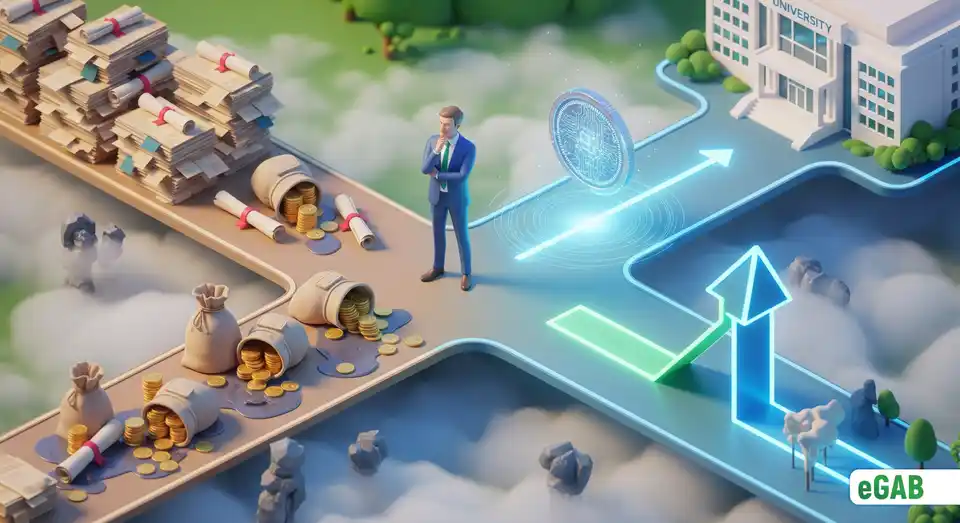
Direct and Indirect Cost Savings from Transitioning to NFT Documents
So, how do NFT credentials save universities money? The tangible benefits of adopting NFT credentials aren't about one single, massive gain. Instead, think of it as a powerful one-two punch. First, you get immediate, direct cost cuts you'll see on your budget from day one. Then, you get the indirect, long-term gains that come from supercharged efficiency and a stronger institutional brand. This powerful combination works together to build your institution's value for years to come.
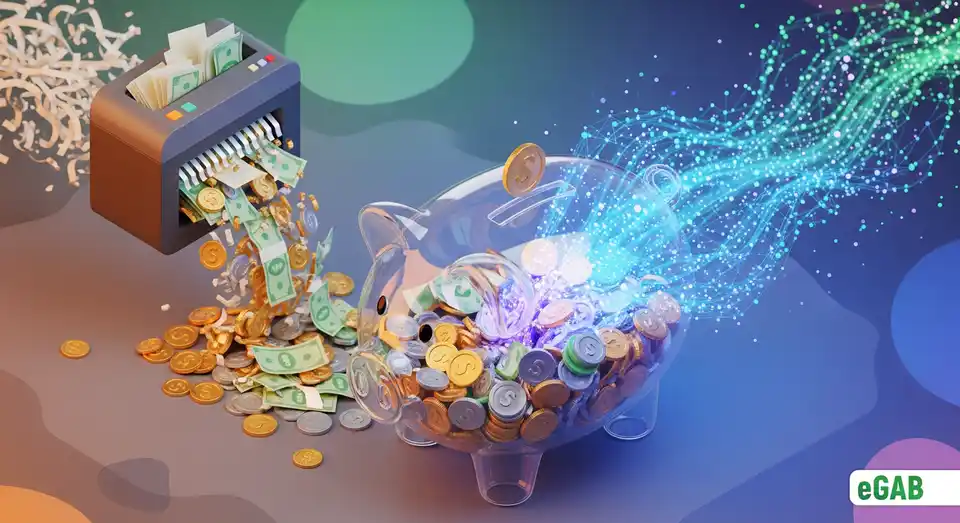
Short-term and Long-term Advantages
While you'll see real, tangible savings within the first year, the true power of NFT documents builds over time. This isn't just a quick fix; it's a long-term strategy for the future of digital academic credentials. You're not just future-proofing your credentialing system-you're strengthening your brand, forging deeper connections with alumni, and wiping out major financial risks. All of this works together to boost your ROI far into the future.

Reduction in Printing and Material Costs
Take a moment and imagine completely erasing budget lines for items like specialized security paper and pricey watermarked blanks. Think about the costs of color printing, ink cartridges, and the endless cycle of printer maintenance. The difference in paper vs digital diploma costs is stark. These are the first and most immediate savings you'll see.
Paper-based systems are a constant drain on your finances. In fact, industry analyses show a staggering difference: it turns out that storing physical records costs 141 times more than digital ones . And when you factor in handling and retrieval, the total cost of managing paper is 2.8 times higher . With NFTs, these huge expenses don't just shrink; they disappear completely.
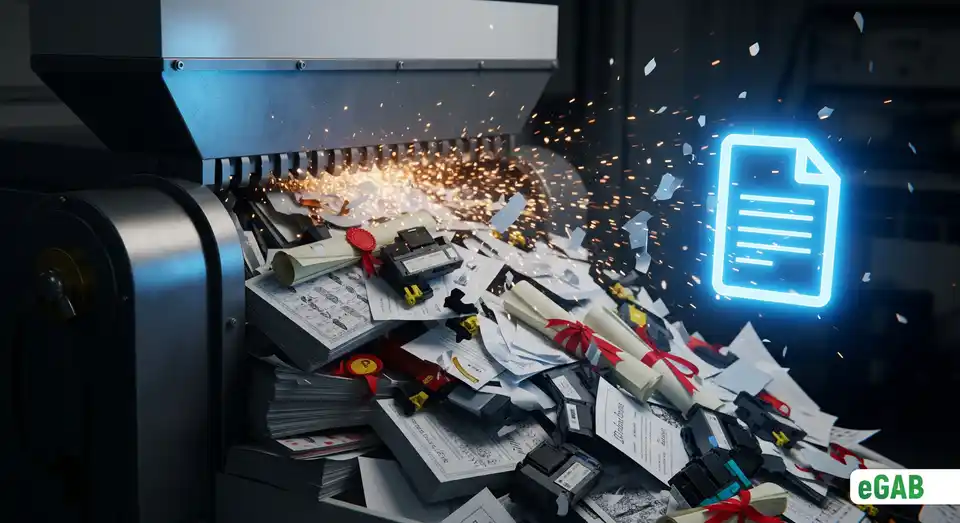
Savings on Logistics and Shipping
How much do you spend each year just mailing diplomas? The combined costs of postage and international couriers add up fast, especially for graduates scattered across the globe. It's also a logistical nightmare for your administrative staff.
An NFT document, on the other hand, is delivered instantly. It's secure, global, and costs next to nothing to send, landing directly in your graduate's digital wallet the moment you issue it. These digital diploma cost savings go beyond materials to include the total elimination of shipping fees. This process not only gives your graduates a smooth, modern experience but also gets rid of your logistical and shipping overhead entirely.
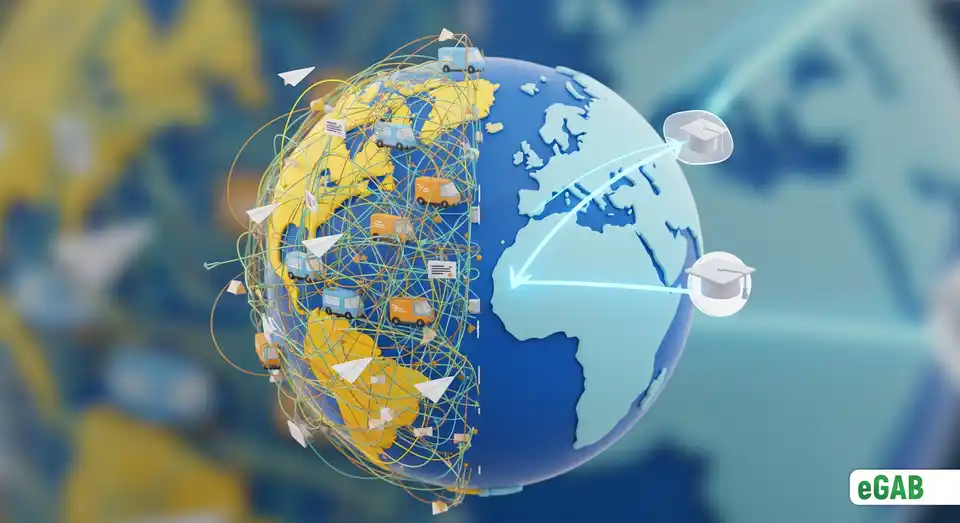
Reduced Storage and Archiving Costs
Think about the sheer physical space your institution currently dedicates to storing decades of student records. All of those filing cabinets and dedicated archive rooms represent a massive hidden cost. A detailed analysis by Iron Mountain highlights these exact expenses , pointing to crucial factors like real estate, climate control, and security.
It's widely cited that filling just one filing cabinet can cost an organization around $25,000 . And that's not all. It then costs another $2,100 per year just to maintain it. If you use off-site storage, you're likely paying anywhere from $1 to $5 per square foot every single month . NFT credentials wipe this expense out entirely. Because they're stored forever on a secure, decentralized blockchain, this switch frees up both your budget and your physical space for initiatives that actually matter.
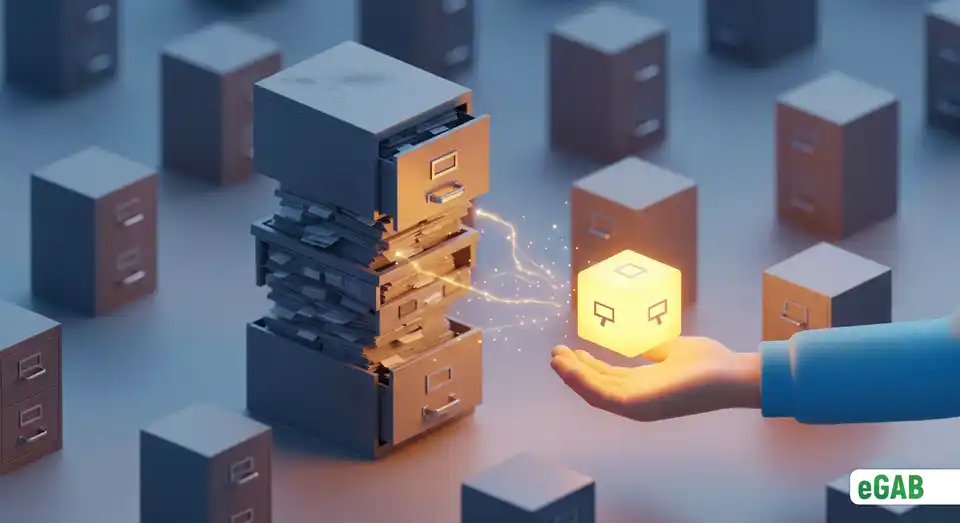
Verification and Reduced Administrative Expenses
Let's be honest: how much of your staff's valuable time is eaten up by manual verification? They're constantly checking credentials for employers and background check companies, a process that underscores why blockchain and NFTs are essential for credential verification. It’s a tedious, repetitive task that crushes productivity and inflates your administrative overhead .
A deep-dive IDC research paper, The Document Disconnect , found some shocking numbers. All that document-related busywork can cause a 21.3% loss in overall productivity , costing an organization about $19,732 per employee, every single year . Your team could be spending up to 2.5 hours a day just on these manual checks. By automating verification with NFTs, you give them that time back. This shift empowers your staff to focus on high-impact work that actually drives your institution forward.
Here’s where it gets really powerful. Let's say you want to keep issuing traditional paper diplomas. Even then, adding a digital credential on the eGAB platform is a game-changer. So, what is a digital twin for a physical diploma? The physical diploma still serves as a proud symbol of achievement, but now it’s supercharged with a digital twin. This twin solves the single biggest headache of paper records: slow, frustrating, and labor-intensive verification.
Now, an employer or university anywhere in the world can instantly confirm the diploma’s authenticity. All they have to do is scan a QR code or click a link. They get immediate, blockchain-verified proof directly on the eGAB platform-no more waiting weeks for a reply from your office. This simple move transforms a static piece of paper into a dynamic, globally trusted digital asset.
Why It Matters: Freeing your staff from the grind of manual verification isn't just about cutting costs; it's a direct investment in your people. Instead of being bogged down by administrative churn, your team can redirect its focus to student engagement, program development, and strategic planning. When that happens, your entire institution benefits from their enhanced expertise and creativity.
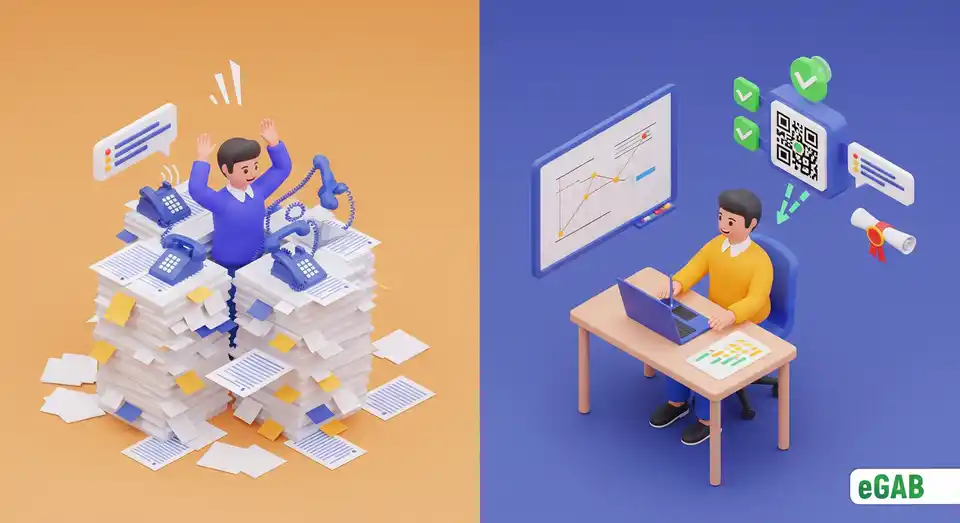
Increased Attractiveness to Applicants (Enrollment Growth)
The global education market is incredibly crowded, and you need to stand out. So, can offering NFT diplomas increase student enrollment? Absolutely. Offering secure, portable, and globally recognized NFT credentials sends a clear and powerful message. You're signaling to tech-savvy students and their parents that your institution is on the cutting edge of innovation. This is a powerful tool to increase university enrollment with technology , giving your student recruitment efforts a major boost. This unique selling point can increase your institution's competitiveness by up to 20% . This isn't just about looking modern; it's a real marketing advantage that can lead directly to higher student enrollment and, in turn, a stronger financial foundation.
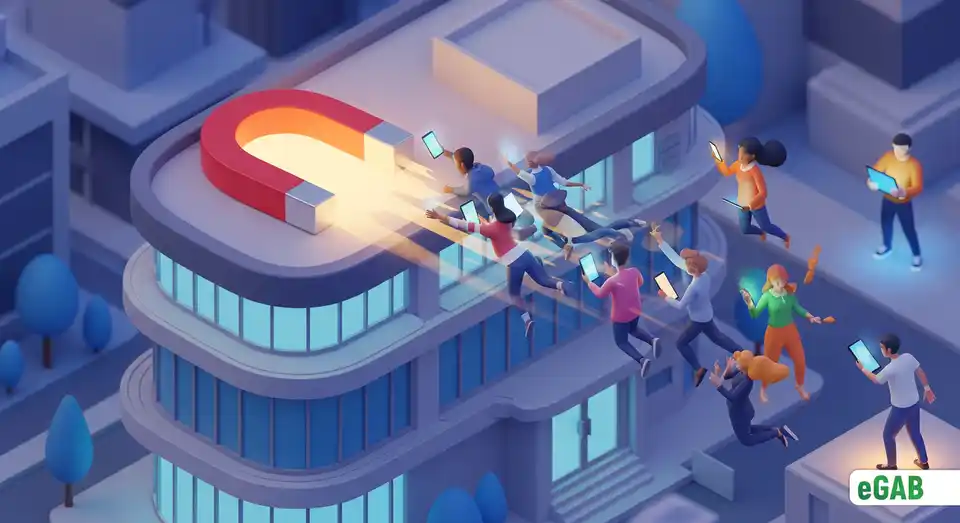
Strengthening Brand and Reputation (Marketing Value)
Adopting innovative technology like NFT credentials immediately positions you as a leader in the academic world. Your institution is instantly seen as forward-thinking. This perception creates a positive buzz and gives your digital brand a major boost. The positive impact on your brand reputation is both immediate and lasting. It also makes you far more attractive to top-tier students, renowned faculty, and valuable industry partners.
What’s more, there's a powerful organic marketing benefit. Every time a graduate shares their secure NFT credential, they are actively helping you. When they post it on a professional network like LinkedIn, they become a trusted marketing tool, broadcasting your university's credibility and innovative spirit to a global audience. These NFT diplomas for universities serve as a constant, public-facing testament to your commitment to excellence.
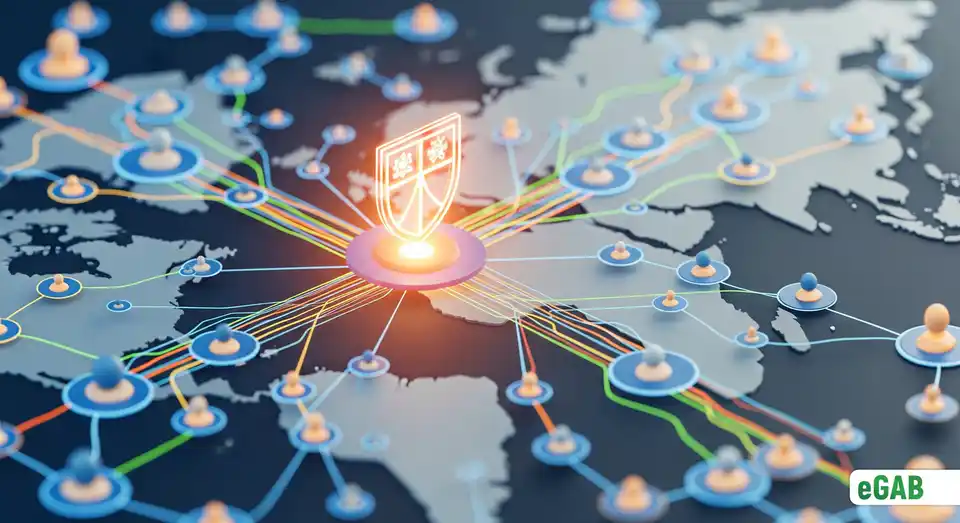
Improved Alumni Engagement (Fundraising Potential)
A strong, active alumni network is one of your institution's most valuable assets. But how do digital credentials improve alumni engagement? A modern digital ecosystem gives you a direct and effective way to stay in touch. With NFT credentials, you can maintain lifelong relationships with your graduates. By giving them a genuinely useful tool for their careers, you build lasting loyalty and a deep sense of connection. This commitment to alumni engagement with digital credentials forges a powerful bond. This goodwill, in turn, makes alumni much more likely to participate in fundraising initiatives. They'll be more open to contributing to endowments and championing your institution's future growth.
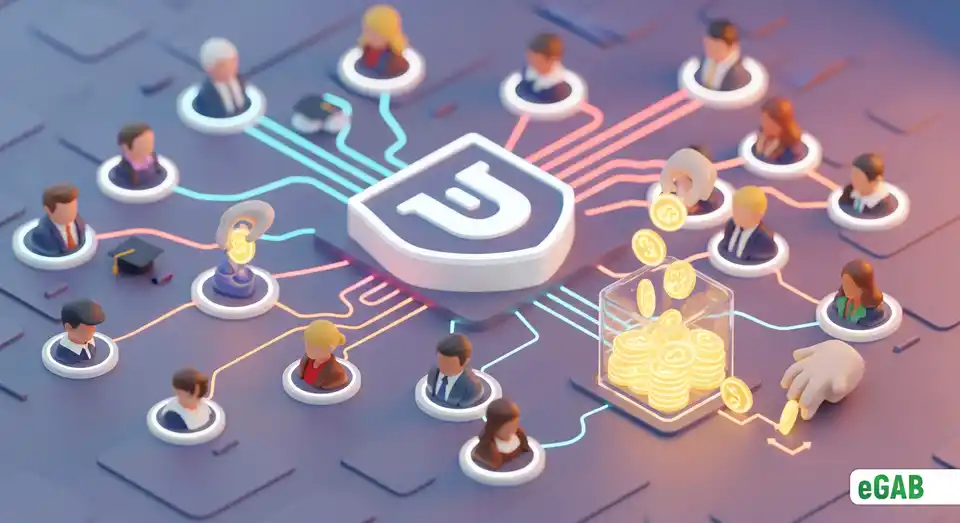
Savings on Diploma Fraud Prevention
Diploma fraud isn't a small or isolated problem; it's a massive global industry, and the latest diploma forgery statistics are shocking. So, how can universities prevent diploma fraud? The solution is to adopt technology that makes forgery impossible. Respected organizations like the Council for Higher Education Accreditation (CHEA) constantly warn against "degree mills" , such as the one detailed in the Anatomy of an International Diploma Mill. These fraudulent operations churn out fake credentials, fueling a multi-billion-dollar black market.
The fallout from a single case of credential fraud can be devastating for both your reputation and your finances. It can lead to expensive internal investigations, long legal battles, and even permanent, irreparable damage to your brand. This stands in sharp contrast to traditional digital formats, showing why a PDF diploma doesn’t protect against fraud. Preventing diploma fraud with NFTs is one of the most compelling reasons to use this technology. Because they're secured on an unchangeable blockchain as verifiable credentials , NFT credentials make forgery impossible, eliminating this threat entirely. This approach directly tackles the core issue of data security . Your degrees become tamper-proof and instantly verifiable, which safeguards both their inherent value and your institution's good name.
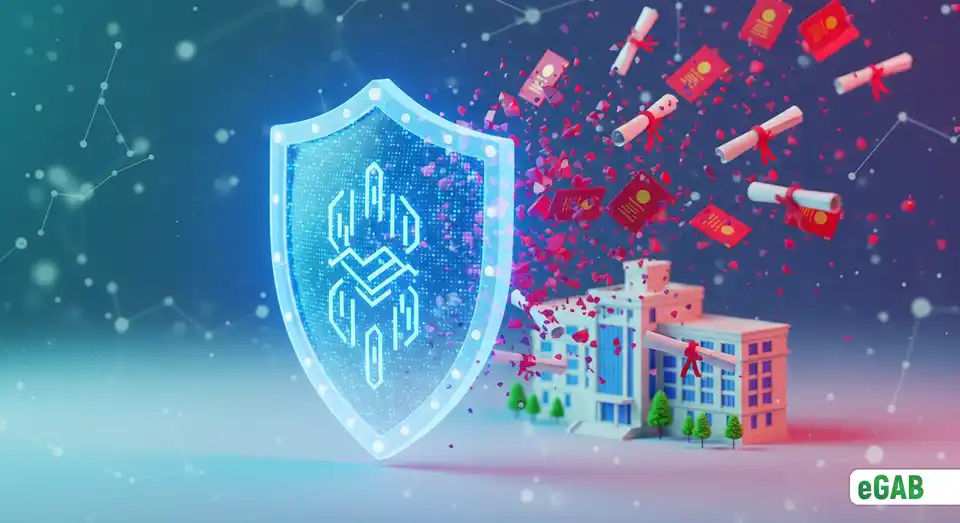
Creation of Brand Ambassadors
When your graduates share their secure NFT credentials , they instantly become your most powerful brand ambassadors . On professional platforms like LinkedIn, they serve as your most authentic and effective advocates. This isn't some paid advertisement; it's a real-world endorsement from a trusted, verifiable source that showcases the true value of the education you provide. This digital word-of-mouth magnifies your brand’s prestige and expands your reach in a way that no marketing budget could ever buy.
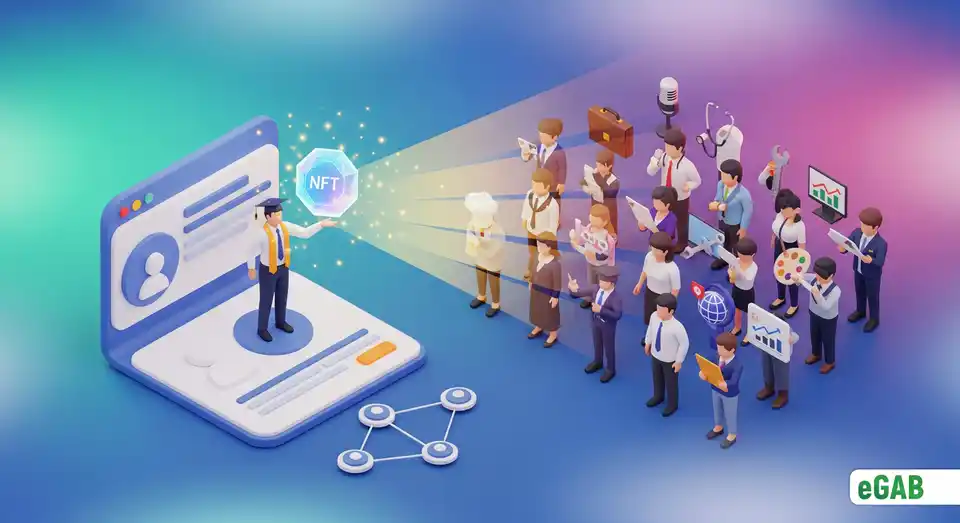
Fostering Alumni Communities
The platform you use for NFT credentials can be so much more than a simple document portal. It has the power to become a central hub-the very heart of a vibrant, active alumni network . By giving graduates a shared digital space to showcase their achievements, you foster a powerful sense of community and connection. This interconnected network delivers incredible long-term value , leading to mentorship programs, professional networking opportunities, and sustained financial support for your institution.
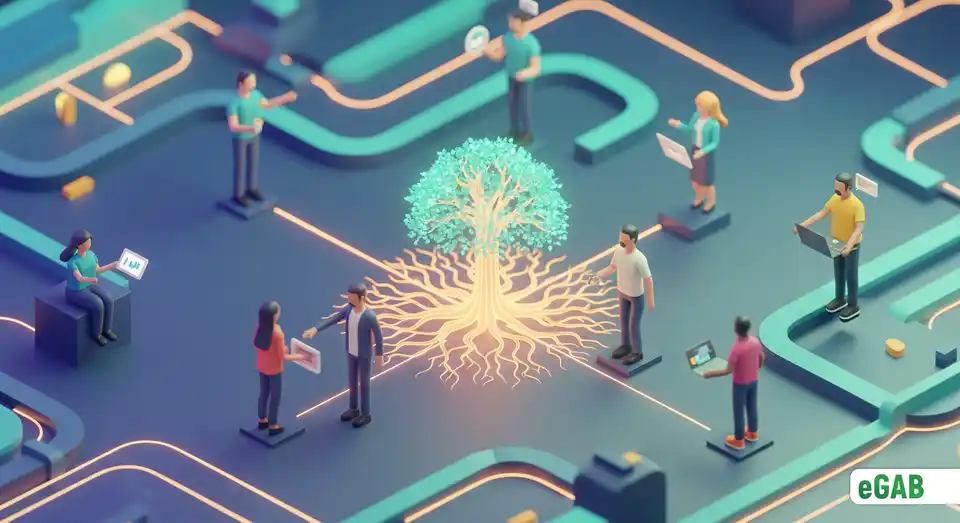
What's Included in the Cost of Implementing an NFT Credential System?
Of course, any new technology comes with an initial investment. That's why it's so important to know exactly what you're paying for. What are the costs of issuing NFT certificates? Let's break down the potential costs so you get a full, transparent picture.
- The Cost of Your Chosen Platform/Ecosystem: This is your most important decision, and it will have a massive impact on both your budget and your success. The cost of NFT diplomas for colleges can vary wildly depending on the path you choose. - Developing your own solution: Let's be direct: this option is like trying to build a car from the ground up. It's an incredibly expensive, time-consuming, and high-risk path. You'd need to hire a dedicated team of specialized blockchain developers and security experts. Plus, you'll have to budget for constant, expensive maintenance and upgrades. - Using universal public blockchains: At first, choosing a public blockchain like Ethereum might seem like a smart move. But this path is filled with hidden costs and wild unpredictability. You're at the mercy of volatile transaction fees that can spike overnight, making it impossible to budget effectively. On top of that, you're on your own-there's no dedicated support or specialized legal framework, and you still have to build the entire user-facing platform yourself. - Specialized "turnkey" ecosystems (like eGAB from Credly.study): This is, by far, your best option. It gives you the perfect balance of world-class quality and predictable, manageable costs. Think of it like buying a fully serviced car from a brand you trust. With a top-tier NFT certificate platform for education like eGAB, your cost can be as low as $0.25 per document. That transparent, all-inclusive price covers everything: all transaction fees on the CREST Chain , secure hosting, and integrated services like a Trusted Third Party (TTP) and Certificate Authority (CA).
- Potential Costs for Integration and Staff Training: - Depending on your current IT setup, you may need a small budget for integration. You'll probably want to connect the new system with your existing student information systems (SIS) . It’s also wise to set aside a little time for training. But here's the good news: modern platforms like Credly.study are designed to be incredibly intuitive. As this non-technical guide to issuing and managing NFT credentials shows, this design dramatically cuts down on both training time and complexity.
Quick Insight: When you choose an all-in-one ecosystem like eGAB, you're not just buying a piece of tech; you're investing in a complete, managed service. This smart move gets rid of all the "hidden costs" that come with in-house development. You'll completely avoid unpredictable fees and long training periods, putting you on a clear, predictable path to a fast return on your investment.

The ROI of NFT Credentials: A Step-by-Step Calculation Guide for Educational Institutions
Thinking about issuing NFT credentials? It’s easy to get lost in the tech jargon. So let's focus on what really matters for your institution's budget: the return on investment (ROI). Many people see new technology as just another expense. But what if it's actually a powerful tool for slashing costs, boosting revenue, and protecting your valuable brand? What is the ROI of implementing NFT diplomas?
The truth is, your traditional diploma process is filled with hidden costs that are quietly draining your budget. From the labor of manual verification to the huge financial risk of fraud, the old way is far more expensive than most people realize. This guide will walk you through, step-by-step, how to calculate the real ROI of switching to a modern system like the eGAB ecosystem. When you're calculating ROI for educational technology , it's critical to look beyond the initial price tag. Let’s crunch the numbers and see just how fast this smart investment pays for itself.
Step 1: Calculate Production Costs for Physical Documents
First, let’s add up all the obvious expenses. This is about much more than the price of paper and ink. Your total production cost includes key items like specialty security paper, high-quality printing, and ongoing equipment maintenance. When you add it all up, the final number is often surprisingly high.
But the real shocker is the ongoing cost of storage. Did you know that, according to detailed industry analysis, storing physical documents can be up to 141 times more expensive than storing digital ones ? When you combine that with handling and other related tasks, the total cost to manage paper is 2.8 times higher than with a modern digital system. Add up these annual costs to get your starting number.
Step 2: Sum Up Logistics and Mailing Expenses
How much are you spending just to get diplomas into the hands of your graduates? This isn't just the price of a few stamps. You need to calculate the total annual cost of all your logistics, which includes:
-
Postal and courier fees , which can get very expensive for international graduates.
-
Specialty packaging to make sure the documents don't get damaged in transit.
-
Staff time spent preparing, packing, and tracking hundreds, if not thousands, of mailings.
These aren't just direct costs; they're also massive inefficiencies, especially when a secure digital credential can be delivered instantly, anywhere in the world, for free.
Step 3: Factor in Physical Archive Maintenance Costs
Those archive rooms full of filing cabinets are a silent drain on your budget. The costs go far beyond the physical space they occupy. According to industry data, it can cost an organization around $25,000 just to fill a single four-drawer filing cabinet. On top of that, you'll pay another $2,100 each year just to maintain it .
If you use off-site storage facilities, the costs are even clearer, often ranging from $1 to $5 per square foot every month . These are significant, recurring expenses that a permanent, decentralized blockchain archive gets rid of completely.
Important Note: You'll only see the full savings from Steps 1, 2, and 3 if you decide to completely stop issuing paper documents. However, even if you go with a hybrid model, you will still see a huge return from the next steps.
Step 4: Quantify Savings from Automated Verification
This is where the ROI becomes impossible to ignore, even if you keep issuing paper diplomas . By creating a digital twin of each document within the eGAB ecosystem, you can completely automate the entire verification process.
Think about the labor costs you're paying right now. Extensive research shows that document-related busywo
rk can cause massive problems, leading to a 21.3% loss in productivity and costing you an average of $19,732 per employee each year . Your team might be wasting up to 2.5 hours every day just hunting for information or handling verification requests. Automation frees up your talented people, letting them focus on high-value work that truly serves your students and advances your mission.
Step 5: Estimate Revenue from Increased Enrollment and Brand Value
Adopting NFT credentials isn't just about saving money-it's also about making it. In today's fierce market, innovation makes you stand out. Offering secure, globally recognized digital credentials can seriously boost your appeal to prospective students, potentially increasing it by up to 20% .
Better still, your graduates become powerful ambassadors for your brand every time they share their verifiable NFT documents on professional networks like LinkedIn. Each share is a trusted, organic testimonial that paints your institution as a modern leader. That generates priceless marketing value that money just can't buy.
Step 6: Calculate the Value of Improved Alumni Engagement
How do you keep your graduates connected for a lifetime? A modern digital ecosystem is the perfect tool for building and maintaining those lifelong relationships. It also helps you grow an active, engaged alumni community.
This stronger loyalty has a direct, measurable financial upside. Graduates who feel connected to your institution are far more likely to join fundraising campaigns and give to endowment funds. This isn't just about building a community; it's about securing a sustainable financial future for your school.
Step 7: Quantify the Financial Value of Fraud Prevention
Diploma fraud isn't a minor issue; it's a global crisis that undermines academic integrity everywhere. The black market for fake degrees is a multi-billion-dollar industry, and it puts your institution's priceless reputation directly on the line.
What would be the financial fallout from a major fraud scandal tied to your institution? The costs could be catastrophic, including crushing legal fees and irreversible damage to your brand. One of the greatest benefits of blockchain credentials is that they're immutable. NFT credentials issued on the blockchain are impossible to fake, completely eliminating this risk. That’s not just a security feature; it's a multi-million-dollar insurance policy for your institution's most valuable asset: its name.
Step 8: Determine the Total Investment for the NFT Solution
Finally, let's look at the investment. The main cost is the platform itself. With the eGAB ecosystem, the PRO plan starts at a predictable $0.25 per document . A complete educational NFT ROI calculation has to weigh this tiny cost against the massive savings you'll make. This transparent, all-inclusive price covers everything you'll need:
-
Issuance on the specialized CREST Chain blockchain.
-
Secure hosting and worldwide platform access for all your users.
-
All trust services, including Trusted Third Party (TTP) and Certification Authority (CA) validation.
You might also have a small, one-time integration cost to link the platform to your current Student Information Systems (SIS). When you compare this small, predictable investment to the huge hidden costs of your current system, the financial argument becomes perfectly clear.
Next Step: Go ahead and start your own internal audit using these eight steps as your guide. Take a moment to estimate what you're really spending right now. You might be shocked when you find out just how much the "old way" is actually costing you. Calculating your potential ROI is the first critical step toward making a powerful strategic investment in your institution's future.
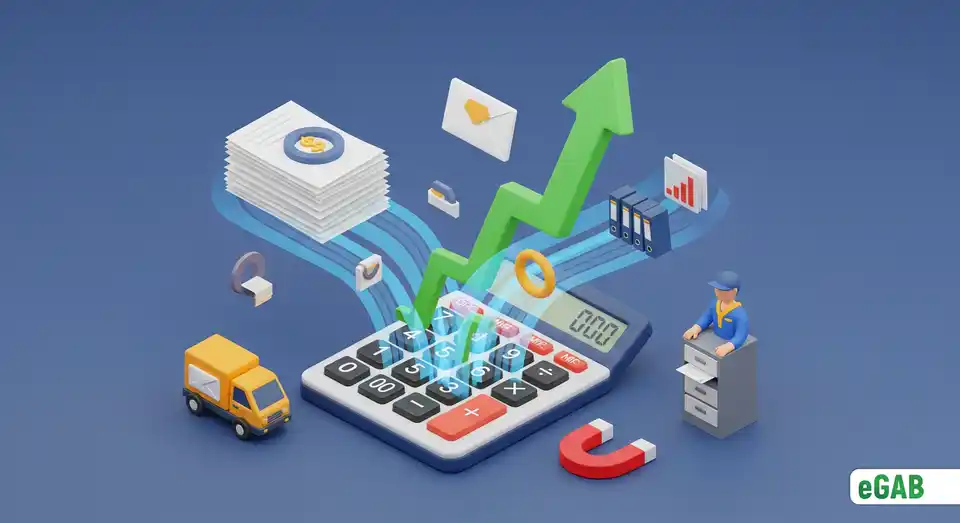
Example ROI Calculation for Implementing eGAB NFT Credentials
Are paper diplomas and outdated, inefficient systems draining your budget? That's a critical question you need to ask. To make the financial benefits of the eGAB ecosystem crystal clear, let's walk you through the numbers for a typical university across a couple of common scenarios.
Let's set the stage with our University Profile:
-
Annual Graduates: 1,000
-
Current System: Issues only traditional paper diplomas.
Scenario 1: Full Transition from Paper-Only to eGAB-Only
In this first scenario, our university decides to make a clean break from the past. It stops issuing paper credentials completely and moves entirely to secure digital credentials on the eGAB platform.
- Step 1: Let's Tally Up Your Current Annual Costs (The Paper Trail) - Printing & Materials: This includes specialty paper, inks, and printer maintenance. Let's put this at $5 per diploma . - Total: 1,000 graduates x $5 = $5,000 - Logistics & Mailing: Think postage, mailers, and the staff hours to manage it all. We'll estimate this at $7 per diploma . - Total: 1,000 graduates x $7 = $7,000 - Archive & Verification Labor: Your team spends valuable time managing physical archives and answering verification calls. Let's peg this cost at $8,000 annually . - Total: $8,000 - Your Total Current Annual Cost: $5,000 + $7,000 + $8,000 = $20,000
- Step 2: Calculate the New Annual Costs (The eGAB Way) - eGAB PRO Plan: A simple, predictable $0.25 per NFT credential . - Total: 1,000 graduates x $0.25 = $250 - One-Time Integration Cost: A single fee of $500 . This covers professional setup and training, ensuring you're running smoothly from day one.
-
Step 3: Calculate the ROI for Your First Year
-
Total Savings:
$20,000 (Old Costs) - $250 (New Costs) =
$19,750
-
Total Investment (Year 1):
$250 (eGAB Fees) + $500 (Integration) =
$750
-
ROI Formula:
[(Net Profit - Total Investment) / Total Investment] x 100- ROI Calculation:[($19,750 - $750) / $750] x 100 = 2,533%
By eliminating costs tied to paper, the university achieves an incredible first-year ROI of 2,533% .
Takeaway: A full switch to a digital-first system doesn't just modernize your process; it delivers a mind-blowing return on investment by practically erasing recurring material, shipping, and labor costs.
Scenario 2: Hybrid Model (Traditional Paper + eGAB Credentials)
What if you're not quite ready to give up paper entirely? No problem. In this hybrid model, the university keeps issuing its traditional diplomas but supercharges them with eGAB NFT credentials, which act as a secure, verifiable digital twin. Many institutions ask, are digital diplomas more secure than paper? By combining them, you get the best of both worlds: tangible tradition and verifiable security.
- Step 1: Identify the Current Annual Costs - The total cost for printing, mailing, and archiving remains the same at $20,000 .
- Step 2: Calculate New Costs & Savings (The Hybrid Advantage) - eGAB PRO Plan Cost: 1,000 graduates x $0.25 = $250 - One-Time Integration Cost: $500 - The Key Saving: Here’s where the magic happens. The biggest saving comes from automating the verification process. Employers can now instantly verify the digital credential online, which dramatically slashes the administrative labor needed for manual checks. - Estimated Labor Savings: A 75% reduction in verification work = $8,000 x 0.75 = $6,000
-
Step 3: Calculate the ROI for Your First Year
-
Total Savings:
$6,000
-
Total Investment (Year 1):
$250 (eGAB Fees) + $500 (Integration) =
$750
-
ROI Calculation:
[($6,000 - $750) / $750] x 100 = 700%
Even while maintaining its traditional paper system, the university achieves an impressive first-year ROI of 700% .
s an impressive 700% ROI in the first year alone, purely from the huge efficiency gains of automated verification.
Why It Matters: You don't have to choose an all-or-nothing approach. A hybrid model still delivers a fantastic ROI by automating your most time-consuming headache: verification. You save money, free up your staff, and give your graduates a modern tool they'll actually love and use.
Scenario 3: Transitioning from an Expensive In-House Digital System to eGAB
For our final scenario, let's say your university is already tech-savvy and built its own digital verification portal years ago. The problem? You've realized it's incredibly expensive to maintain. That’s why you've decided to switch to the smarter, globally recognized eGAB ecosystem.
- Step 1: Calculate Your Current Annual Costs (The In-House Headache) - Platform Maintenance: The costs for servers, security updates, and dedicated IT staff are steep. Let's estimate them at $15,000 annually . - Verification Labor: Your team still has to handle complex inquiries and system issues, costing you an estimated $5,000 annually . - Total Current Annual Cost: $15,000 + $5,000 = $20,000
- Step 2: Calculate Your New Annual Costs (The eGAB Upgrade) - eGAB PRO Plan Cost: 1,000 graduates x $0.25 = $250 - One-Time Integration Cost: $500
-
Step 3: Calculate Your ROI for the First Year
-
Total Savings:
$20,000 (Old Costs) - $250 (New Costs) =
$19,750
-
Total Investment (Year 1):
$250 (eGAB Fees) + $500 (Integration) =
$750
-
ROI Calculation:
[($19,750 - $750) / $750] x 100 = 2,533%
By switching from a costly, siloed in-house system to the streamlined eGAB ecosystem, the university achieves that same phenomenal 2,533% ROI we saw in the first scenario. This move frees up a massive amount of IT resources and budget while connecting your graduates to a globally recognized standard.
Next Step: Do any of these scenarios hit close to home for your institution? Go ahead and run these numbers with your own university's data. Estimate your current costs for printing, mailing, and verification. You'll see for yourself just how quickly this small, strategic investment pays for itself.
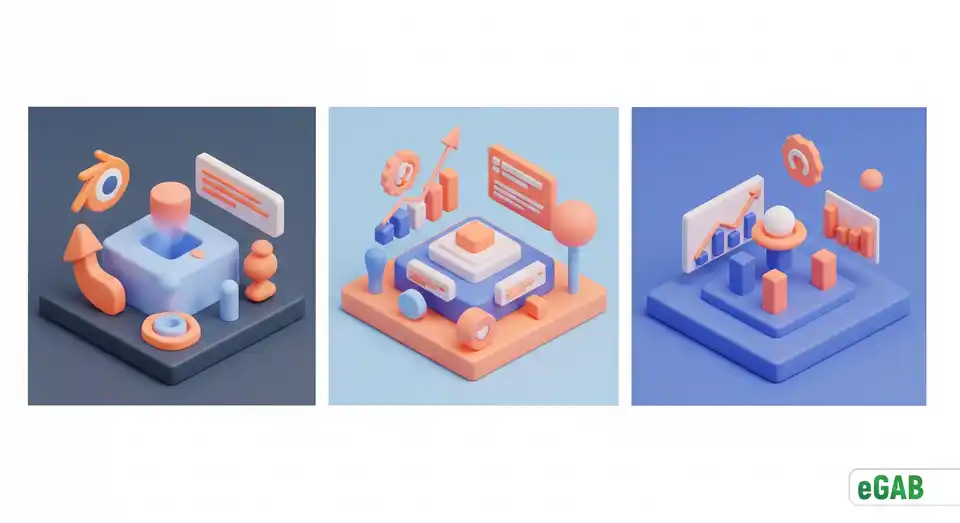
Summary: The Clear Financial Payback of NFT Credentials
So, what's the bottom line? Adopting NFT credentials isn't just a futuristic tech experiment-it's a powerful and calculated financial strategy that comes with a massive, measurable return on investment. This article flips the script on the outdated view of credentials as a simple cost center and repositions them as a strategic asset. By moving away from costly paper-based systems, the ROI of NFT credentials becomes undeniably clear.
Your journey to financial efficiency starts with immediate and dramatic direct cost savings . Just imagine it. You could completely erase your budget for specialty paper, printing, and complex international shipping. You can also forget about the vast physical space needed for archiving. Let's be honest: storing physical records can be 141 times more expensive than digital alternatives.
But here's the real game-changer, and it's a benefit that works even if your institution keeps paper diplomas. I’m talking about the power of automating verification. When you provide a digital twin for every physical document-a verifiable digital counterpart on a platform like eGAB-you eliminate the administrative black hole of manual checks. That's a process that can devour over 21% of an employee's productivity . This strategic shift frees up thousands of hours of valuable staff time, redirecting their focus to high-impact initiatives.
Beyond savings, NFT credentials actively create immense, tangible value. They serve as a powerful marketing tool, making your institution up to 20% more competitive in the race to attract tech-savvy students. Every graduate who shares their secure credential on LinkedIn-and you can see what an NFT diploma looks like here-becomes a trusted brand ambassador , organically boosting your reputation across the globe.
This modern approach also nurtures vibrant alumni communities , helping you to fulfill the vision of a global digital credentials management program. It strengthens the lifelong bonds that directly translate into greater fundraising potential. Perhaps most critically, it offers an ironclad solution to the pervasive, multi-billion-dollar problem of diploma fraud. By issuing verifiable credentials on the blockchain, you’re buying a priceless insurance policy for your institution's hard-won integrity.
Now, let’s weigh these massive savings against the incredibly low investment, which can be as little as $0.25 per document when using a turnkey ecosystem like eGAB. When you look at it that way, the financial case is simply undeniable. As the detailed scenarios prove, you can choose to transition fully or adopt a hybrid model. Either way, the ROI can soar from 700% to over 2,500% in the very first year. The bottom line? This is one of the smartest investments an educational institution can make in its future.
➡️ What's your logical next step? To fully grasp the ROI of the new system, you first have to understand the costs of the old one. Dive into the hidden costs of verification and how traditional methods hurt your budget.
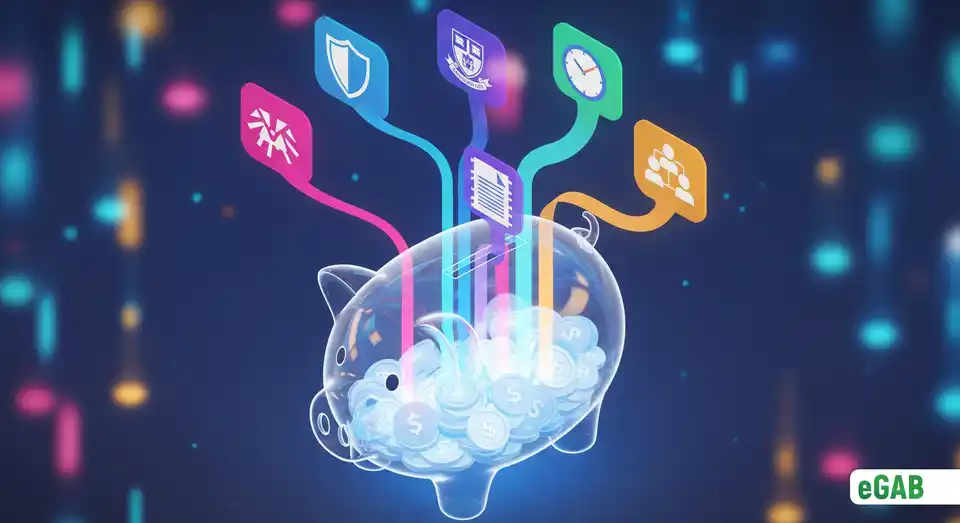
Why a PDF Diploma Doesn't Protect Against Fraud: A Technical Breakdown of Vulnerabilities
Diploma Forgery Statistics for 2025: The Latest Trends and Shocking Figures
The Axact Case: Anatomy of an International "Diploma Mill"
Choosing a Blockchain for Academic Credentials: A 2025 Comparison Guide
Why Leading Universities Choose eGAB for Issuing & Managing Digital Credentials
